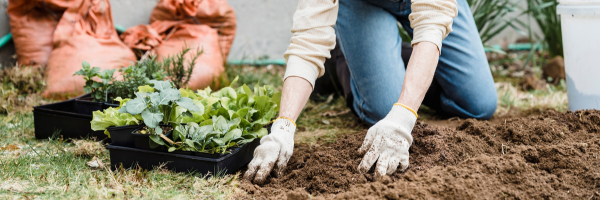When the first flower blooms on a plant that you have been caring for, it becomes apparent why gardening is such a rewarding hobby. There is a genuine sense of accomplishment and appreciation from successfully cultivating a plant. Gardening for seniors is also a great form of exercise because it is a low-impact physical activity that promotes both physical health and mental well-being. This is why we decided to provide gardening tips in this blog.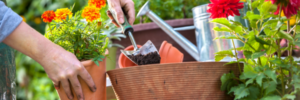
If you are looking to give gardening a try, here is some gardening help. It covers various fundamentals, including what plants need to survive, how plant needs can be diverse, gardening tools for seniors, and other variables to consider when gardening for the first time.
Perennials vs. Annuals
No matter what kind of plants you’re interested in cultivating, it is important to understand that plants can have different life cycles. These are classified as annuals, perennials, or biennials, and are determined mostly by geographic location and climate conditions.
Annuals
Annuals are plants that complete their life cycle from seed to maturity in one growing season before withering.
Perennials
Perennials can live for many years and are unrestricted by a specific number of growing seasons if properly cared for. This is the best kind of plant to cultivate if you’re not interested in re-planting every year or two.
Biennials
Biennials are similar to annuals, except that they die off in two years instead of one.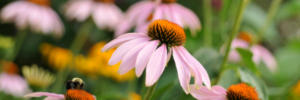
Depending on where you’re geographically located, a plant normally considered to have an annual life cycle in one climate may be a perennial in another. It is best to first determine how often you are willing to re-plant before deciding on a specific species.
Sunlight Requirements for Plants
Whether you’re sowing seeds or juvenile plants, they will have specific sunlight needs. These factors determine where your plant should be planted and grown.
Plants need intervals of shade and sunlight. It is not realistic to expose your plants to the afternoon sun and expect them to flourish. There are several classifications of sunlight requirements:
- Full Sun: 6 or more hours of sun daily. These plants will withstand harsh afternoon summer sunlight.
- Light Shade:3 to 5 hours of direct sun daily. These plants will need relief from the sun with shade over the course of the day.
- Partial Shade: 2 hours of direct morning sun daily This means that your plants need to be shaded for more than half of the day.
- Full Shade: Less than 1 hour of morning sun daily.
- Dense Shade: No direct sunlight needed. Minimal indirect sunlight will suffice.
Make sure to read the tag on your plant to better understand its sunlight requirements.
Watering Plants and Drainage Best Practices
It can be difficult to gauge how much water your plant needs, but here are a few tips to make sure your plants are getting the right amount of H2O.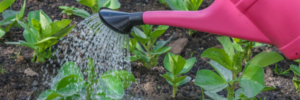
Hot & Dry Climate
If you live in a hot and dry climate, check your plants and their soil regularly, especially if in direct sunlight. It is best to wait until the soil has dried about an inch on top before watering again. This method encourages your plant to root deeper in the soil, making them more drought resistant. You will want to avoid watering too often (which is observed as soggy soil) as this can cause plant roots to rot.
Plants Growing in Pots
If you have your plants growing in pots, be aware that the soil may dry out quicker if the pots are unglazed. Alternatively, you can cover the top of the soil around your plant with a layer of mulch. This will slow down the evaporation process, so you don’t have to frequently water your plans. Always make sure your pots have a drainage hole at the bottom for releasing excess water.
Climbing Plants Vs. Ground Covers
Plants can grow either vertically or horizontally.
Ground Covers
Plants that grow outwards are known as “ground covers,” which include roman chamomile and mint. If you’re interested in growing a ground cover plant in a pot, make sure the vessel is wide enough to enable adequate outward growth, at least two feet wide.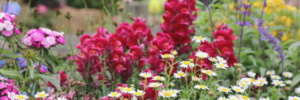
Climbing Plants
For plants that climb (e.g., honeysuckle), place a trellis in the same pot as the plant. It gives the vines an anchor as they grow upward. Plants that grow vertically are not considered a “climbing” plant, so they do not need a trellis unless they start drooping. An example is a pepper plant with branches of heavy produce. In this case, you can place a sturdy stake in the soil beside the main stem before attaching them together with zip ties.
Successfully growing a plant from a seed is far more difficult than caring for an already established plant. The latter, however, is arguably more rewarding. Conditions need to be precise for a seed to sprout, so seed starting is typically conducted indoors in a highly controlled environment. It is important to research what this care will entail based on the plant species. Once the seed has been started, then you can transplant it to a pot or to the ground outdoors. However, if you’re a beginner gardener, we highly recommend caring for saplings and juvenile plants instead.
Root systems will reach deeper into the soil as plants grow. Extra care is needed for potted plants – a plant should be removed from its pot every 6 months. Additionally, its roots need to be loosened from its old soil (gently, using gloved hands!). Disturb the remaining soil in the pot so that it isn’t as dense, and add a few scoops of fresh soil. The longer a plant sits in a pot without being re-potted with fresh soil, the more likely the roots will run out of room to grow. This process is important to gauge the time to re-pot your plant to a bigger container.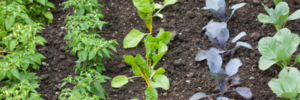
Chilling Hours for Dormancy
Plant growth is heavily dependent on climate, which is why some plants grow better in the northern part of the U.S. than the south. Part of this climate requirements are chilling hours and dormancy, which are especially required for certain fruit-bearing plants. These plants are required to lay dormant for a certain amount of time before fruits will grow If that amount of time is not reached, the plant will not bear fruit.
On the subject of chilling, potted plants that are sensitive to freezing temperatures should be brought indoors during the night so the cold doesn’t kill the plant. It is recommended to research dormancy expectations of your plant beforehand.
General Upkeep, Pruning, and Plant Ailments
This is one of the most important parts about gardening. Pruning is the process of cutting away dead parts of a plant to make room for new growth, and includes general upkeep. It is important to understand that plants can become plagued by disease, fungus, or pests. For example, black spots are a common ailment among plants. This disease is characterized by the black spots on leaves, along with gradual yellowing of the leaf. You should remove any infected leaves and discard them away from the plant to prevent black spots from spreading.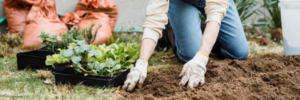
Ready To Approach Gardening?
This is certainly a lot of information to take in if you’re new to gardening. Don’t worry; gardening is not an exact science. It may be useful to try caring for potted plants first, and researching what plants thrive in your geographic location. Whether you’re interested in growing fruits or vegetables, herbs for cooking or making tea, or flowers for aesthetics, you will discover that plants help spruce up your space and promote, well-being too.


